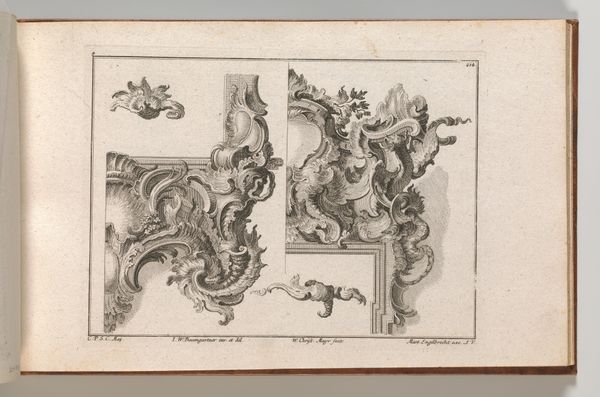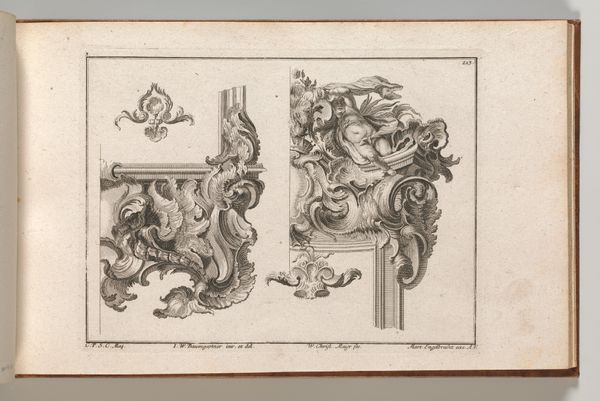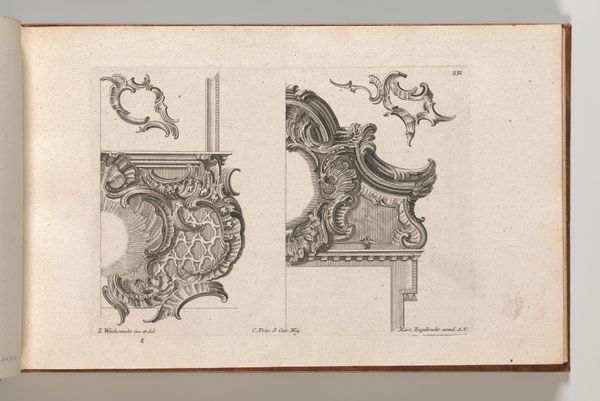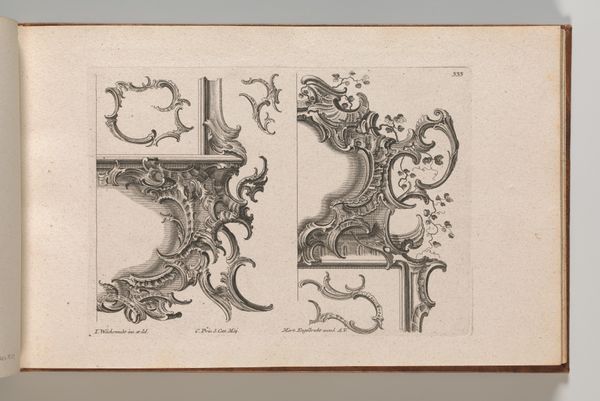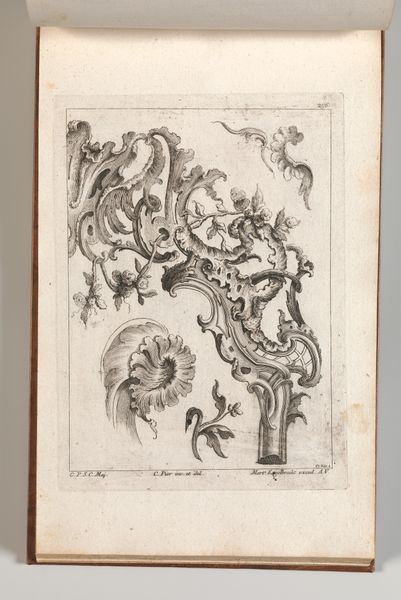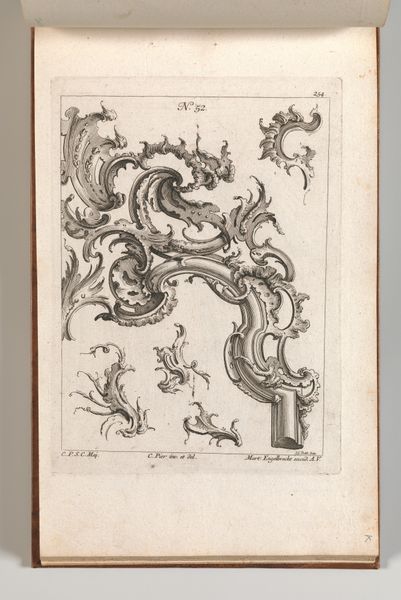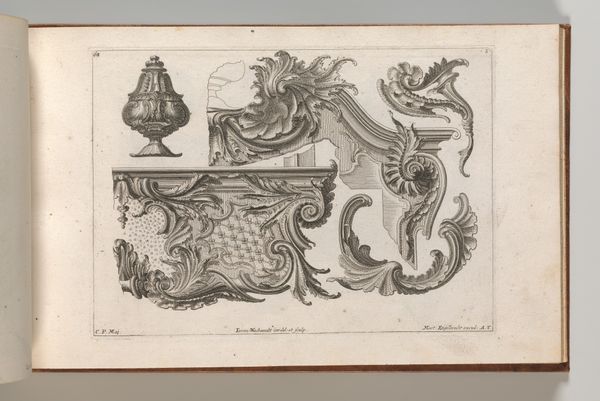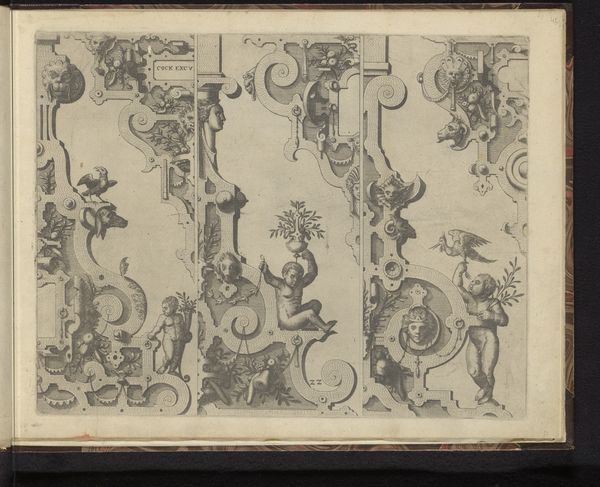
Suggestion for the Decoration of Lower Right and Top Right of an Altar Frame, Plate 2 from an Untitled Series with Rocailles Ornaments for Altar and Door Frames 1745 - 1755
0:00
0:00
drawing, ornament, print, engraving
#
drawing
#
ornament
# print
#
decorative-art
#
engraving
#
rococo
Dimensions: Overall: 8 7/16 × 13 3/4 in. (21.5 × 35 cm)
Copyright: Public Domain
Curator: Here we have Wolffgang Christoph Mayr's "Suggestion for the Decoration of Lower Right and Top Right of an Altar Frame," a plate from a series dating back to the mid-18th century, around 1745-1755. It features rocailles ornaments intended for altar and door frames, a drawing presented as an engraving. Editor: My first impression is one of dynamism. The forms are so energetic, almost aggressively ornate. Look at those swirling, shell-like shapes. Curator: The Rococo style, isn't it? Consider the social function of ornament during this period. The Church, like the aristocracy, was cementing authority with excessive display of its wealth. Mayr here provides almost like templates or guide for craftsmen looking to decorate altars. Editor: True. The visual vocabulary is undeniable Rococo with the curves, asymmetry and flourishes. Tell me, what could semiotics have to tell us? How might one read the formal decisions through that lens? Curator: Well, the elaborate forms aren’t merely decorative. They signify power, both religious and secular. Think of the Baroque period—religious reformers were consciously responding against Protestantism, establishing wealth to express themselves Editor: So the abundance suggests wealth, and the complex details signal a sophisticated, cultivated taste—qualities aligned with the elite class commissioning these pieces? Curator: Precisely! Also, Mayr, producing this decorative object and his client were active agents working to ensure the political structures of that period remain unchanged and unchallenged. Editor: That makes sense. The asymmetry does add an almost rebellious touch, in its slight deviation from rigid geometric order. How do you think someone in the present, especially a young viewer with no church ties might respond to this piece? Curator: The decorative-art functions as historical artifacts bearing testimony of those societies of privilege that may have been rooted in systemic inequity. By considering artwork with respect to history, gender, race and social class may inspire us to ask who determines what artwork is included. Editor: Certainly, that shift in understanding enriches my view of the print! Thanks. Curator: Thank you too. I was initially so absorbed in the symbolic meaning that I almost overlooked its visual design entirely. It is so informative to consider both dimensions of each art object.
Comments
No comments
Be the first to comment and join the conversation on the ultimate creative platform.
